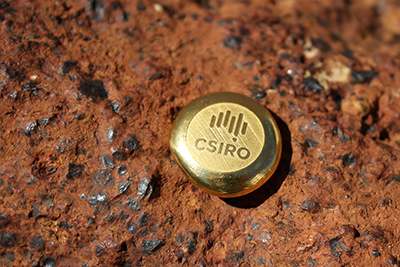CSIRO develops cyanide-free non-toxic process for gold mining
AUSTRALIA’s national science agency, CSIRO has produced the country’s first gold using a non-toxic chemical process that looks set to offer a global alternative to using cyanide and mercury to extract the yellow metal.
Cyanide and mercury pollution of local watercourses, often as a result of extreme weather events, has been known to endanger local populations and has caused the downfall of several major mining corporations.
CSIRO’s first gold is the result of early industry trials of its ‘going for gold’ technology and was produced in partnership with small gold miner Eco Minerals Research at a demonstration plant in the Western Australian goldfields town of Menzies.
Cyanide is used in more than 90 percent of global gold production, but producers are facing increasingly tough regulations that prevent or restrict its use due to environmental and health concerns. 
For example, in response to recent spills of toxic cyanide, several regional agencies in the United States, South America and Europe have banned the use of cyanide for gold extraction.
The technology replaces cyanide with thiosulphate, a non-toxic alternative, and a simple process flowsheet.
It could be a game-changer for Eco Minerals Research which has its sights set on becoming the first Australian producer to go cyanide-free.
“The first gold is a major milestone in our progress towards becoming one of the world’s first green gold producers,” Eco Minerals Research managing director Paul Hanna said.
“In close collaboration with CSIRO we’ve gone through the design, engineering and fabrication stages and set up a processing facility in Menzies, delivering the first gold pour in just 10 months, which is a fantastic achievement.”
The CSIRO research team behind the innovation has already had commercial success with another tailored cyanide-free gold solution developed with Barrick Gold specifically for the company’s Goldstrike Mine in Nevada, where it has been used for nearly four years to maintain production rates.
The $2.1 million demonstration project was made possible through $860,000 in funding from the Science and Industry Endowment fund (SIEF) and an Australian Government Innovation Connections grant.
“Science enabling industry and environment to be partners not competitors, exactly as envisioned in our market vision – turning commodities into higher value, uniquely Australian products,” CSIRO chief executive Larry Marshall said.
“It has been accelerated through CSIRO’s ON program, and could be a game-changer for small gold producers or those looking to get ahead of increasing market demand for greener commodities.
“Early industry trials like this are critical to innovation and go to the heart of CSIRO’s mission to tackle big, real-world challenges and unlock a better future for everyone,” Dr Marshall said.
He said to reduce economic barriers to entry for small producers and help turn stranded gold deposits into production, CSIRO’s vision was to deliver the alternative process technology direct to mine sites via a mobile service.
A typical cyanide-based processing plant costs around $30 million, whereas the new technology has a lower capital investment costing as little as $2-2.5 million to build.
Find out more about CSIRO’s going for gold technology here.
ends

